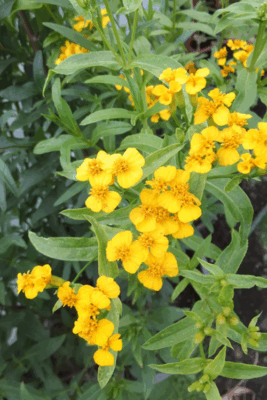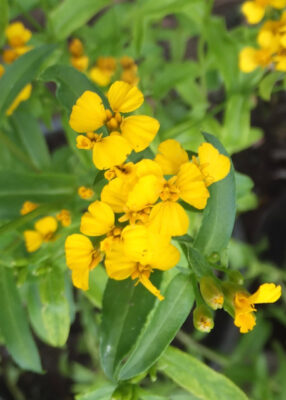
Anyone visiting your greenhouse will be intrigued by this. A real surprise, a tasty herb and an edible plant I’d never tried before. And when I tell you the genus I’m sure it will surprise you as well.
The cheerful yellow flowers are a give-away, does their colour remind you of anything? These are an excellent long lasting show but not why this plant has long been grown. It’s actually better to remove these flowers to get a burst of new tender foliage as though you can pick leaves anytime they are more flavoursome young.
That’s right, this is a herb, known in Anglophile countries as Sweet Mace it has absolutely no hint of Mace (the aril surrounding nutmeg which has another warm aromatic scent). Nope, it actually tastes almost identical to French Tarragon and far far better than that miserable Russian Tarragon often substituted.
Even the great French gardener Vilmorin-Andrieux recognises the flavour is good and the plant much easier to keep going than the genuine article. (Real French Tarragon needs to be divided and reproduced every other year or it just dies away.)

Indeed also known as Mexican Tarragon for like the rest of its genus they’re all South and Central American in origin. Two other close relations you already know have more misleading misnomers: French & African Marigolds, also come from the same region. For this is a Tagetes, T. lucida. First introduced to the UK in 1798.
This Sweet mace can be grown just the same as marigolds except a tad more tender so happier under cover. And, unlike marigolds which are annual this is a perennial, however so easy to grow from seed it’s simpler to start anew each spring discarding old plants in autumn.

Sow, in warmth, in any reasonable compost and as soon as emerged pot on into individual pots or several plants to a tub. Feed lightly and water regularly. Like its relations this is seldom bothered by pests or disease, endures neglect well and makes an excellent filler amongst other plants.
Bizarrely this herb has long been especially popular for its tarragon flavour in soups and stews in Nottingham of all places.










